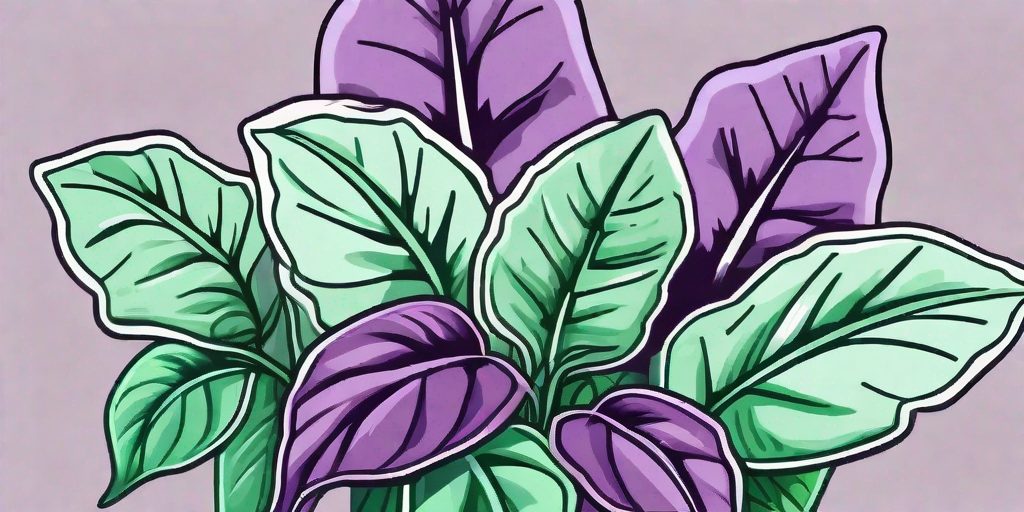
If you're a herb enthusiast or a passionate gardener, you've probably heard about the Purple Basil Plant. This vibrant, aromatic herb is not only a visual treat but also a culinary delight. But, if you're still wondering what's so special about this purple-hued beauty, let's dive into the world of Purple Basil and discover why it's a must-have for every herb garden.
Understanding the Purple Basil Plant
What is Purple Basil?
Unlike its green cousin, the Purple Basil (Ocimum basilicum 'Purpurascens') is a variety of sweet basil that boasts a rich, deep purple color. This striking hue is due to anthocyanins, the same pigments that give blueberries their signature color. But don't be fooled by its beauty, this herb is more than just a pretty face!
With a unique flavor profile that combines the sweet taste of traditional basil with subtle hints of clove, the Purple Basil is a versatile herb that can jazz up your culinary creations. Plus, its vibrant color can add a pop of visual appeal to your dishes. Talk about a win-win!
Why Should You Grow Purple Basil?
Well, if its stunning color and unique flavor haven't convinced you yet, let's talk about its other benefits. First off, Purple Basil is a powerhouse of nutrients. It's packed with vitamins A and C, calcium, iron, and antioxidants. So, adding it to your meals not only enhances the taste but also boosts your health.
Moreover, this herb is a natural pest deterrent. Its strong aroma keeps away common garden pests like aphids and tomato hornworms. So, if you're tired of these pesky critters ruining your garden, Purple Basil might just be your knight in shining (or should we say, purple) armor!
How to Grow Purple Basil
Choosing the Right Spot
Purple Basil is a sun-loving plant. It needs at least six hours of sunlight each day. So, choose a spot in your garden that gets plenty of sun. If you're planning to grow it indoors, place it near a south-facing window.
Also, this herb prefers well-drained soil. So, make sure your garden bed or pot has good drainage. A soggy soil can lead to root rot, which is a death sentence for your Purple Basil.
Planting the Seeds
Once you've chosen the perfect spot, it's time to plant the seeds. You can start the seeds indoors 6-8 weeks before the last spring frost or sow them directly in the garden after the danger of frost has passed. Plant the seeds 1/4 inch deep and keep the soil moist until the seeds germinate.
When the seedlings are about 2 inches tall, thin them to about 12 inches apart. This gives the plants enough room to grow and ensures good air circulation, which helps prevent diseases.
Caring for Your Purple Basil
Purple Basil is a relatively low-maintenance plant. It needs regular watering, but be careful not to overwater. The soil should be kept moist, not waterlogged.
As for fertilizing, a slow-release organic fertilizer applied at planting time should be enough. If the leaves start to lose their vibrant color, a dose of liquid seaweed can help restore their purple hue.
Harvesting and Using Purple Basil
When and How to Harvest
The best time to harvest Purple Basil is in the morning when the leaves are at their juiciest. To harvest, simply pinch off the topmost leaves. This encourages the plant to become bushier and produce more leaves.
Remember, regular harvesting not only gives you a steady supply of fresh basil but also prevents the plant from flowering. Once the plant flowers, the leaves become bitter and the plant's life cycle ends.
Culinary Uses of Purple Basil
Now that you've harvested your Purple Basil, it's time to put it to good use. This herb is a great addition to salads, pasta, and pizzas. It can also be used to make a colorful pesto or a refreshing summer drink. The possibilities are endless!
Just remember, Purple Basil's flavor is best when it's fresh. So, add it to your dishes at the end of cooking to preserve its taste and color.
Frequently Asked Questions
- Can Purple Basil be grown in pots?
Yes, Purple Basil can be grown in pots. Just make sure the pot has good drainage and is big enough to accommodate the plant's growth.
- Is Purple Basil perennial?
No, Purple Basil is an annual plant. It completes its life cycle in one growing season and needs to be replanted each year.
- Can I use Purple Basil in place of green basil?
Yes, Purple Basil can be used in any recipe that calls for green basil. However, keep in mind that it has a slightly different flavor profile.
So, there you have it, folks! The Purple Basil is not just a visual delight but also a culinary superstar. It's easy to grow, packed with nutrients, and a natural pest deterrent. So, what are you waiting for? Get your hands on this vibrant herb and add a pop of purple to your garden and your meals!











